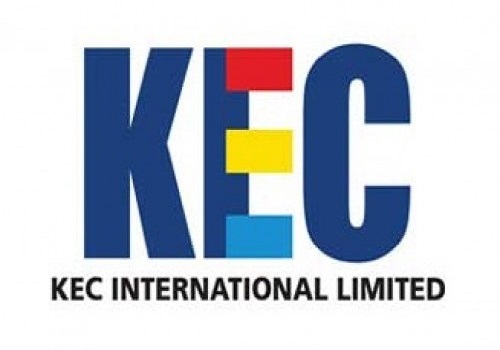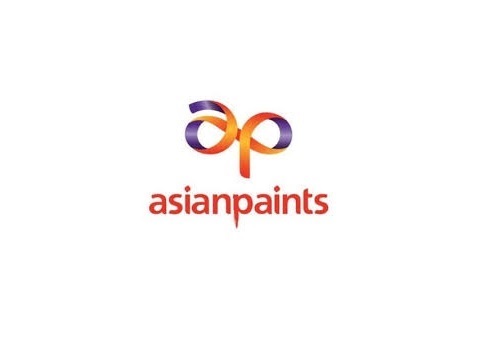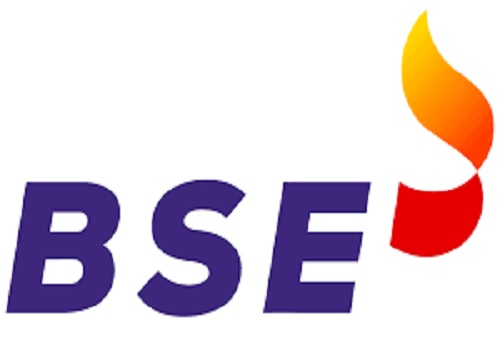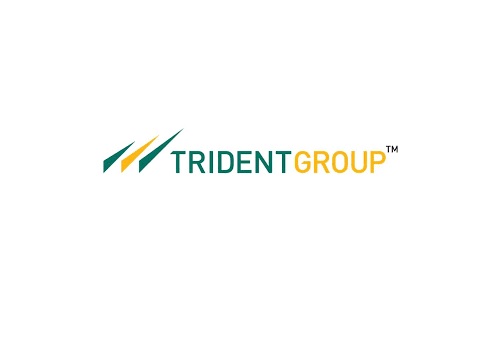NBFC Sector Update : Rates dominating narrative even as fundamentals steady By JM Financial Institutional Securities Ltd
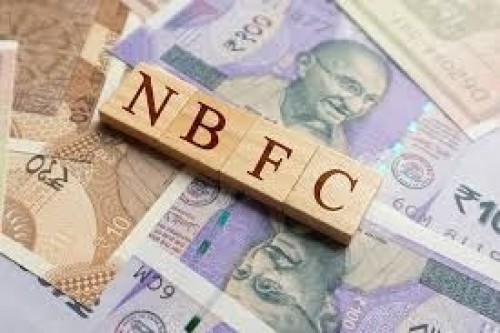
Rates dominating narrative even as fundamentals steady
In 2QFY23, NBFCs under our coverage depicted mixed performance. As per our expectations: i) disbursements were robust which helped maintaining healthy AUM growth trajectory (+4% QoQ AUM growth), ii) cost of borrowings inched-up (avg.: +30bps QoQ for our coverage), iii) improvement in assset quality (sequential 34bps/24bps decline in GS3/NS3). Overall operating performance was mixed impacted by various factors viz.: substantial fixed rate book, lag in transmission/ resetting of rates and elevated opex.
Amongst HFCs, individual housing loans maintained buoyancy (disbursements +4% QoQ, +11% YoY) led by continued momentum in residential demand.
In vehicle finance (VF), demand has improved given supply side challenges have broadly eased and major VFs reported healthy business volumes led by used vehicles and ramp-up of new products (disbursements +12% QoQ, +47% YoY).
Amongst diversified financiers, AUM acceleration was strong for BAF (7% QoQ) and Poonawalla (5% QoQ- despite reduction in Discontinued book).
2QFY23 also witnessed sequential increase in cost of funds with slight downward pressure on NIMs. In HFCs, NIMs were mixed wherein LICHF (-74bps QoQ) saw the maximum dent owing to the conversion of fixed to floating rate loans. Diversified Financiers (BAF and Poonawalla) maintained margin profile at healthy levels, aided by significant floating rate book and shorter loan tenor. Collection efficiency (CE) has normalised and early bucket delinquencies declined to pre-Covid levels for most of the players. Resultantly, GS2 and GS3 resonated the enhancement sequentially. GS3 for HFCs shrunk 19bps QoQ, helped by reduction in wholesale book. In VF’s GS3 (-57bps QoQ), MMFS saw meaningful improvement driven by pick-up in rural cashflows and continuous recovery in earn-and-pay segment. Amongst Diversified Financiers’ GS3 (-27bps QoQ), Poonawalla’s GS3 declined 67bps QoQ to 1.5%. Restructured book (OTR) shrunk as the customers have started repaying while slippage from OTR was not alarming. NBFCs evinced prudence and kept the provision coverage at elevated levels (above pre-Covid levels).
We continue to see incremental upmove in CoF for the sector and thus expect NIMs to taper off with most impact likely to VF players, followed by HFCs and diversified lenders seeing least impact. Diversified lenders (esp BAF) will also be better placed given relatively shorter tenor of a sizeable proportion of the asset portflio.
On an average, stocks in our NBFC coverage have delivered 15%/7% returns over past 6M/12M, respectively. We prefer players with easy access to funding, ability to invest in technology and lower stress. We believe sector is likely to begin outperformance as policy rates peak out over the next couple of quarters and would recommend adding weights. Our preferred plays in the NBFC coverage are Bajaj Finance, Poonawalla Fincorp with cyclical upsides in SHTF and LICHF (attractive valuations).
* AUM growth in good stead, driven by robust disbursements: In 2QFY23, disbursements continued the healthy momentum which helped pick-up in AUM growth across the players. For HFCs, QoQ AUM growth was 3% each for HDFC and LICHF, whereas flat for PNBHF on account of calibrated disbursements with focus on retail, and contraction in construction finance book. Overall, individual housing loans maintained buoyancy, while selective approach continued in wholesale segment along with demand side issues. Going forward, PNBHF will also focus on non-affordable segment as credit-metrics are largely similar to affordable, as it continues to revamp its Unnati (affordable) segment. For VFs, QoQ AUM growth was healthy (3 % to 10%) where MMFS grew sharply 10% on the back of improving rural cash flows, easing supply side issues and pick-up in new products. CIFC and SHTF continued the momentum with 7% and 3% growth, respectively. All VFs reckon new vehicle sales and infra activities will pick-up which will aid further AUM growth. Amongst diversified financiers, QoQ AUM acceleration was solid for BAF and Poonawalla at 7% and 5%, respectively. Poonawalla’s AUM growth was optically modest, impacted by compression in Discontinued book (8% of the mix vs. 13%, as of 1QFY23) whereas Focussed book expanded ~11% QoQ. We believe strong AUM trends to continue for BAF, Poonawalla, HDFC, CIFC, SHTF and MMFS (partly aided by favourable base) while AUM growth for PNBHF to remain uninspiring in FY23.
* Margins impinged by inch-up in cost of borrowings: In light of repo-rate hikes (190bps) and drawdown of system liquidity by the RBI since May’22, capital market and bank borrowing rates have materially jumped. Consequently, this spike in CoB is now conspicuous for most of the NBFCs. CoB bottomed out in 1QFY23 and expanded 40bps, 30bps and 25bps on avg. for HFC, VF and diversified financiers, respectively. The CoB jump was more pronounced QoQ in HDFC (60bps), CIFC (68bps) and BAF (44bps) albeit they still have the lowest CoB within their respective cohorts. Interestingly, these lenders were the biggest beneficiaries of benign funding cost environment through the pandemic. However, NIMs were mixed. Notably, the pressure is more pronounced on VF owing to the fixed loans which will be gradually repriced at higher rates on new disbursement. Apart from the CoB, NIMs meaningfully deteriorated QoQ for: i) MMFS (-73bps QoQ) on account change in product mix, shift in customer segment towards better profile borrowers and accretion of excess on-BS liquidity in anticipation of tight liquidity environment, ii) LICHF (-74bps QoQ), owing to the conversion of fixed to floating rate loans and retention of customers (though tenor is extended to protect the NPV of loans). Going forward, CoF will continue this uptrend as the central bank will further hike repo rate and higher 1-yr MCLR based bank borrowing rates will be fully percolated. We continue to see incremental upmove in CoF for the sector and thus expect NIMs to taper off with most impact likely to VF players, followed by HFCs and diversified lenders seeing least impact. Diversified lenders (esp BAF) will also be better placed given relatively shorter tenor of a sizeable proportion of the asset portfolio.
* Asset quality risks largely assuaged – healthy trends continued in CE, leading to improvement in GS3, GS2 and OTR: Collection efficiency (CE) is normalised and early bucket delinquencies declined to pre-Covid levels for most of the players. Resultantly, GS2 and GS3 resonated sequential improvement – GS2 ratios shrunk 30-250bps (except LICHF: +4bps QoQ) and GS3 ratios reduced 5-135bps. Restructured book (OTR) also compressed as the customers have started repaying while slippage from OTR has not been worrisome. Credit cost for most of the players (except PNBHF) declined sequentially. Given cash flows are historically better in 2HFY (vs. 1HFY), weaker borrowers in OTR have already slipped and BAU flow going forward, asset quality should stablise/ enhance hereon. Further, provision coverage is kept at higher levels by most of the lenders, credit costs should normalize from FY24e onwards.
* Our view: On an average, stocks in our NBFC coverage have delivered 15%/7% returns over past 6M/12M, respectively. We prefer players with easy access to funding, ability to invest in technology and lower stress. Our preferred plays in the NBFC coverage are Bajaj Finance, Poonawalla Fincorp with cyclical upsides in SHTF and LICHF (attractive valuations).
To Read Complete Report & Disclaimer Click Here
Please refer disclaimer at https://www.jmfl.com/disclaimer
CIN Number : L67120MH1986PLC038784
Above views are of the author and not of the website kindly read disclaimer

